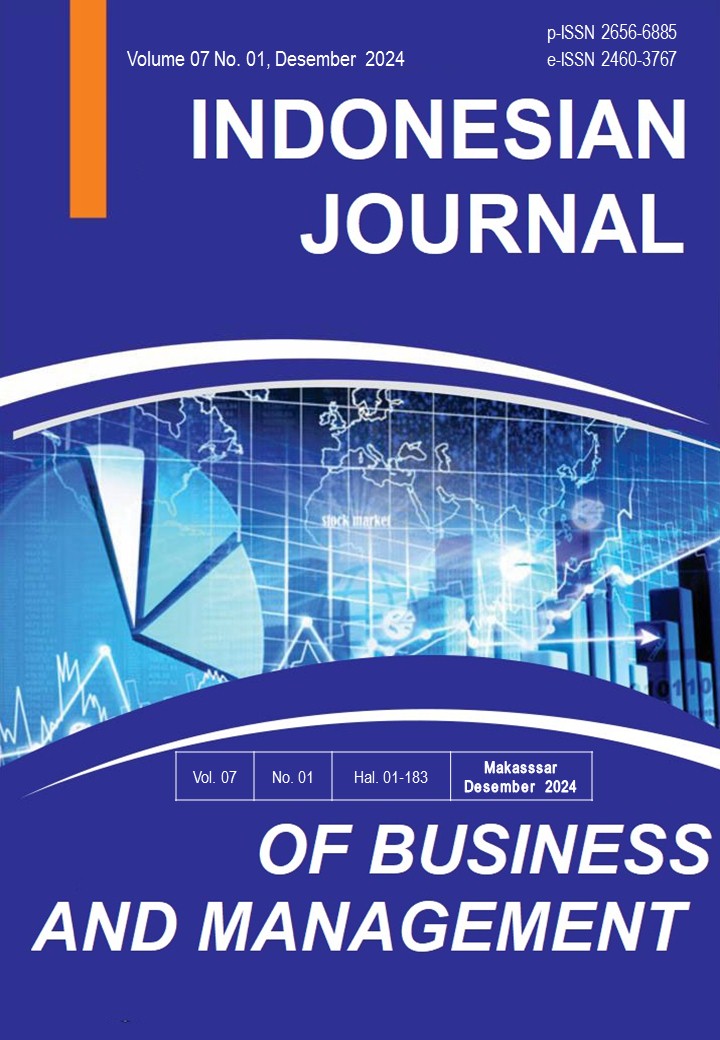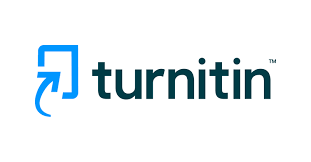ANALISA PENGARUH EFEKTIFITAS APLIKASI PLN MOBILE, INVOICE DIGITAL, DAN SHUNTRIP TERHADAP PENGAMBILAN KEPUTUSAN PEMBAYARAN LISTRIK MELALUI CUSTOMER BEHAVIOR DI PLN ULP ENREKANG
DOI:
https://doi.org/10.35965/jbm.v7i1.5211Keywords:
Customer Behavior, Invoice Digital, Pengambilan Keputusan, Shuntrip, PLN MobileAbstract
Penelitian ini bertujuan untuk menginvestigasi pengaruh aplikasi PLN Mobile, invoice digital, dan teknologi Shuntrip terhadap perilaku pelanggan dalam pengambilan keputusan pembayaran tagihan listrik di PLN ULP Enrekang. Penelitian ini menggunakan pendekatan kuantitatif dengan fokus pada pengumpulan dan analisis data untuk menguji hubungan antar variabel yang telah ditentukan dalam kerangka teoritis. Hasil penelitian menunjukkan bahwa aplikasi PLN Mobile memiliki pengaruh signifikan terhadap customer behavior, khususnya dalam memudahkan akses dan meningkatkan kepuasan pelanggan terhadap layanan PLN. Invoice digital juga terbukti mempengaruhi positif perilaku pelanggan dalam pengambilan keputusan pembayaran, meskipun perlu perhatian lebih terhadap validitas diskriminan untuk memperkuat temuan ini. Selain itu, Shuntrip efektif dalam merangsang pelanggan untuk membayar tagihan tepat waktu, dengan reliabilitas yang tinggi dalam memberikan pengingat kepada pelanggan. Penelitian ini memberikan kontribusi dalam memahami bagaimana teknologi informasi, seperti aplikasi mobile dan invoice digital, serta teknologi pengingat otomatis, seperti Shuntrip, dapat digunakan untuk meningkatkan efisiensi layanan dan memengaruhi perilaku pelanggan dalam industri pelayanan publik seperti PLN. Implikasi praktis dari penelitian ini adalah pentingnya pengembangan teknologi yang dapat mendukung interaksi positif antara pelanggan dan penyedia layanan untuk meningkatkan kepuasan dan retensi pelanggan.
This study aims to investigate the influence of the PLN Mobile application, digital invoicing, and Shuntrip technology on customer behavior in making electricity bill payment decisions at PLN ULP Enrekang. This study used a quantitative approach with a focus on data collection and analysis to test the relationship between variables that have been determined in a theoretical framework. The results of the study show that the PLN Mobile application has a significant influence on customer behavior, especially in facilitating access and increasing customer satisfaction with PLN services. Digital invoices have also been shown to positively influence customer behaviour in payment decision-making, although more attention is needed to the validity of discrimination to reinforce these findings. In addition, Shuntrip is effective in stimulating customers to pay bills on time, with high reliability in providing reminders to customers. This research contributes to understanding how information technology, such as mobile applications and digital invoicing, as well as automated reminder technologies, such as Shuntrip, can be used to improve service efficiency and influence customer behavior in the public service industry such as PLN. The practical implications of this research are the importance of developing technologies that can support positive interactions between customers and service providers to improve customer satisfaction and retention.
Downloads
References
Abdillah, W. d. (2015). Partial Least Square (PLS): Alternatif Structural Equation Modeling (SEM) dalam Penelitian Bisnis. Yogyakarta: Penerbit C.V. Andi Offset.
Aningsih, F. (2015). The Unified Theory of Acceptance and Use of Technology (UTAUT) Examination towards Use Behavior of E-banking Mandiri (Studi on Users of E-Banking Mandiri Which in Sub-district Rajabasa Bandar Lampung). Skripsi Universitas Lampung.
Assael., H. (2004). Consumers Behavior and Marketing Action. Cincinatti,OH: South Western College Publishing.
Bhattacherjee, A. (2001). Understanding information systems continuance: an expectation confirmation model. MIS quarterly, 351-370.
Bowersox, C. (1981). Introduction to Transportation. New York: Macmillan Publishing Co, Inc.
Brown, S., & Glasner, A. (2003). Assessment Matters in Higher Education. Philadelphia: SRHE & Open University Press.
Budiman, H. (2017). peran teknologi informasi dan komunikasi dalam pendidikan. Al-Tadzkiyyah Jurnal Pendidikan Islam, 31-43.
Centeno, C. (2004). Adoption of internet services in the acceding and candidate countries lessons from the internet banking case. Telematics and Informatics, Vol. 21 No. 4,, 293-315.
Chen, S., & Dhillon, G. (2003). Interpreting dimensions of customer trust in e-commerce. Information Technology and Management, Vol. 4 Nos 2-3, 303-318.
Chen, S.-C. (2012). To use or not to use: understanding the factors affecting continuance intention of mobile banking. International Journal of Mobile Communications, Vol. 10 No. 5, 490-507.
Christoper, M. (2005). Logistics and Supply Chain Management : Creating Value-adding Networks. FT Prentice Hall.
Diansyah dan Agung Ryandika Saputra (2024). Efektivitas Penggunaan Aplikasi Sebagai Moderasi Pengaruh Kualitas Pelayanan dan Citra Merek Terhadap Keputusan Pembelian. Ekonomis: Journal of Economics and Business, Vol. 8 No. 1, 147-153.
Drucker, P. F. (2020). on Globalization. Harvard: The Drucker Library.
Elisabeth, C. R., & Nurhayati. (2019). Analisis Biaya Transportasi Dalam Distribusi Pengiriman Barang (Studi Kasus Pt. Pos Logistik Indonesia Bo Bandung). Jurnal Akuntans, 21-28.
El-Masri, M., & Tarhini, A. (2017). Factors affecting the adoption of e-learning systems in Qatar and USA: Extending the Unified Theory of Acceptance and Use of Technology 2 (UTAUT2). Educational Technology Research and Development, 65(3) 743-763.
Ghozali, I. &. (2015). Partial Least Squares: Konsep, Teknik, dan Aplikasi Menggunakan Program Smart PLS 3.0 (2nd ed.). Semarang: Badan Penerbit Universitas Diponegoro.
Ghozali, I. (2016). Aplikasi Analisis Multivariate dengan Program IBM SPSS 19. Semarang: Badan Peneribit Universitas Diponegoro.
Hair, J. F. (2014). Partial Least Squares Structural Equation Modeling (PLS-SEM): an Emerging Tool in Business Research. European Business Review (Vol. 26, Issue 2, pp. 106–121), Emerald Group Publishing Ltd.
Hair, J. F. (2021). Partial Least Squares Structural Equation Modeling (PLS-SEM) Using R. Springer. Cham.
Hany, K. (2002). Belajar Sejarah Melalui E-Learning . Jakarta: PT. Intimedia.
Hardiyanto, N., Indra Gunawan, A., Rafdinal, W., & Afif, N. C. (2021). Analisis Perilaku Belanja Online Selama Masa Pandemi COVID-19. Jurnal Riset Bisnis Dan Investasi. JRBI Polban, 120-130.
Hoffman, D., Novak, T., & Peralta, M. (1999). Building customer trust online. Communications of the ACM, Vol. 42 No. 4, 80-85.
Hong, S. T. (2006). Understanding continued information technology usage behavior: a comparison of three models in the context of mobile Internet. Decision Support Systems, 1819-1834.
Hozhabri, A. R. (2014). Online Re-Purchase Intention: Testing Expectation Confirmation Mode ECM on Online Shopping Contex. Iran 8th International Conference.
Kotler, & Amstrong. (2008). Prinsip-prinsip Pemasaran. Jakarta: Erlangga.
Kotler, & Keller. (2009). Manajemen Pemasaran. Jakarta: Erlangga.
Kotler, P. (2000). Marketing Management 11th Edition. New Jersey: Prentice Hall.Inc.
Nofri, O., & Hafifah, A. (2018). Analisis perilaku konsumen dalam melakukan online shopping di Kota Makassar. Jurnal Minds: Manajemen Ide dan Inspirasi, 113–132.
Peraturan Direksi PT PLN (Persero) Nomor 0133.P/DIR/2019 tentang Pedoman Tata Usaha Konsumen di Lingkungan PT PLN (Persero).
Peraturan Menteri Negara Badan Usaha Milik Negara Nomor PER-09/MBU/2012 tentang Perubahan atas Peraturan Menteri Negara Badan Usaha Milik Negara Nomor Per-01/Mbu/2011 tentang Penerapan Tata Kelola Perusahaan yang Baik (Good Corporate Governance) pada Badan Usaha Milik Negara.
P.Kotler, & Keller, K. (2012). Marketin Management 13. New Jersey: Pearson Prentince Hall Inc.
Rakhmawati, Permana, A. E., Reyhan, A. M., & Rafli, H. (2021). ANAlisa Transaksi Belanja Online Pada Masa Pandemi Covid-19. Jurnal Teknoinfo.
Santoso, H. B., Desprianto, D., Nurohman, I., Nursalamah, R., & Putra, P. (2019). Customer journey construction of the Indonesian open-education resources platform. International Journal of Emerging Technologies in Learning, 14(24) 18-30.
Santoso, S. (2014). Konsep Dasar dan Aplikasi SEM dengan AMOS 22. Elex Media Komputindo.
Schiffman, & Kanuk. (2008). Perilaku konsumen. Jakarta: Indeks.
Sekaran, U., & Bougie, R. (2017). Metode Penelitian untuk Bisnis. Jakarta: Salemba Empat.
Sholihin, M. d. (2013). Analisis SEM-PLS dengan WrapPLS 3.0 Untuk Hubungan Nonliner dalam Penelitian Sosial dan Bisnis. Yogyakarta:: Penerbit C.V. Andi Offset.
Singarimbun, M. d. (1995). Metode Penelitian Survey. Jakarta: PT. Pustaka LP3ES.
Sivo, S., Saunders, C., Chang, Q., & J., J. (2006). How Low Should ou Go? Low Response Rates and The Validity of Inference in is Questionnaire Research. Journal of The Association for Information Systems,, 351-414.
sugiyono. (2009). Metode Penelitian Pendidikan Pendekatan Kuantitatif, Kualitatif, dan R&D. Bandung: Alfabeta.
Sugiyono. (2016). Metode Penelitian Kuantitatif, Kualitatif, dan R&D. Bandung: Penerbit Alfabeta.
Sukitman, T. (2016). Internalisasi Pendidikan Nilai Dalam Pembelajaran (Upaya Menciptakan Sumber Daya Manusia Yang Berkarakter). Jurnal Pendidikan Sekolah Dasar Ahmad Dahlan, 1.
Downloads
Published
How to Cite
Issue
Section
License
Copyright (c) 2024 Rindy Rindy, Sukmawati Mardjuni, Haeruddin Saleh

This work is licensed under a Creative Commons Attribution 4.0 International License.










